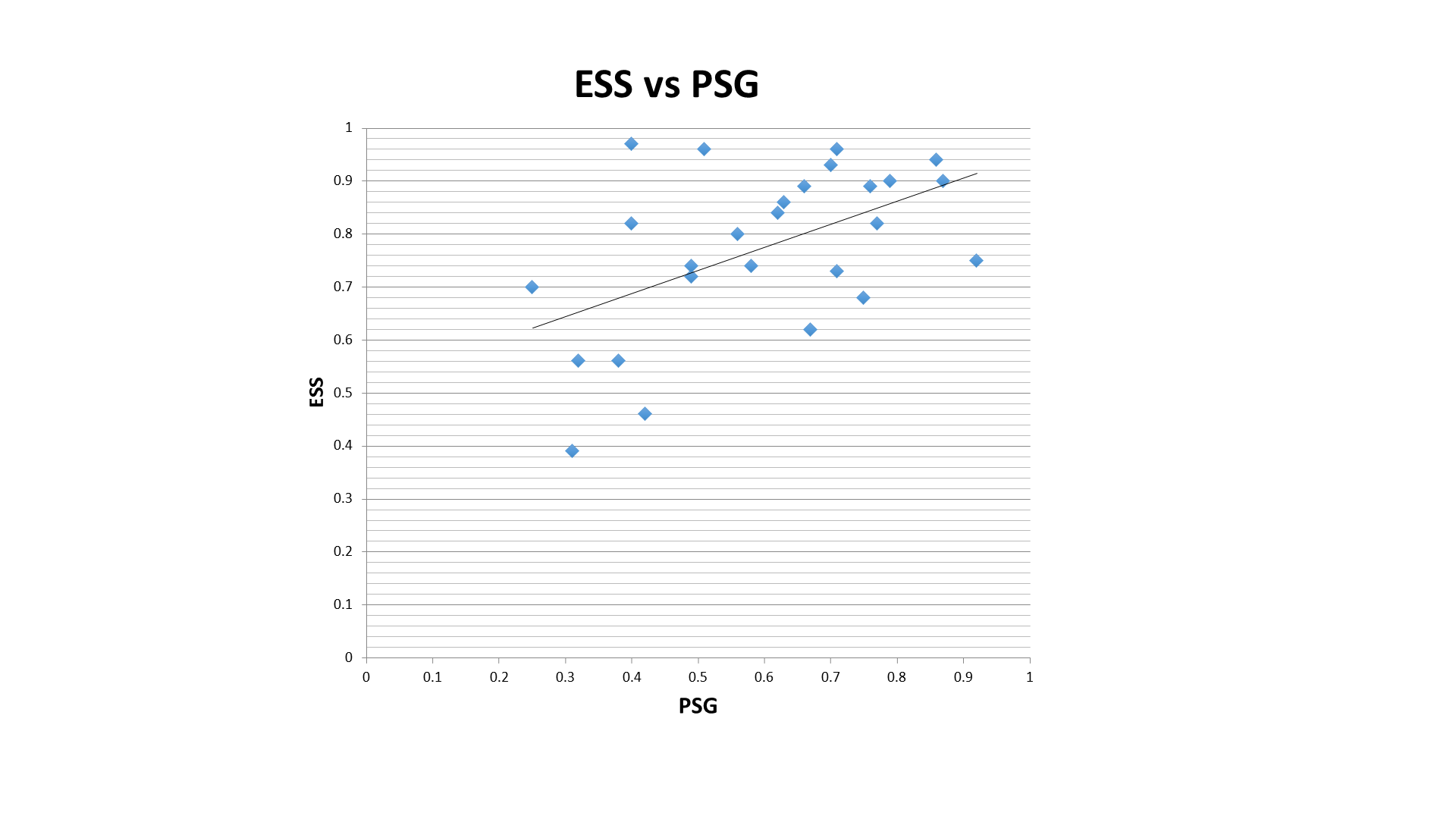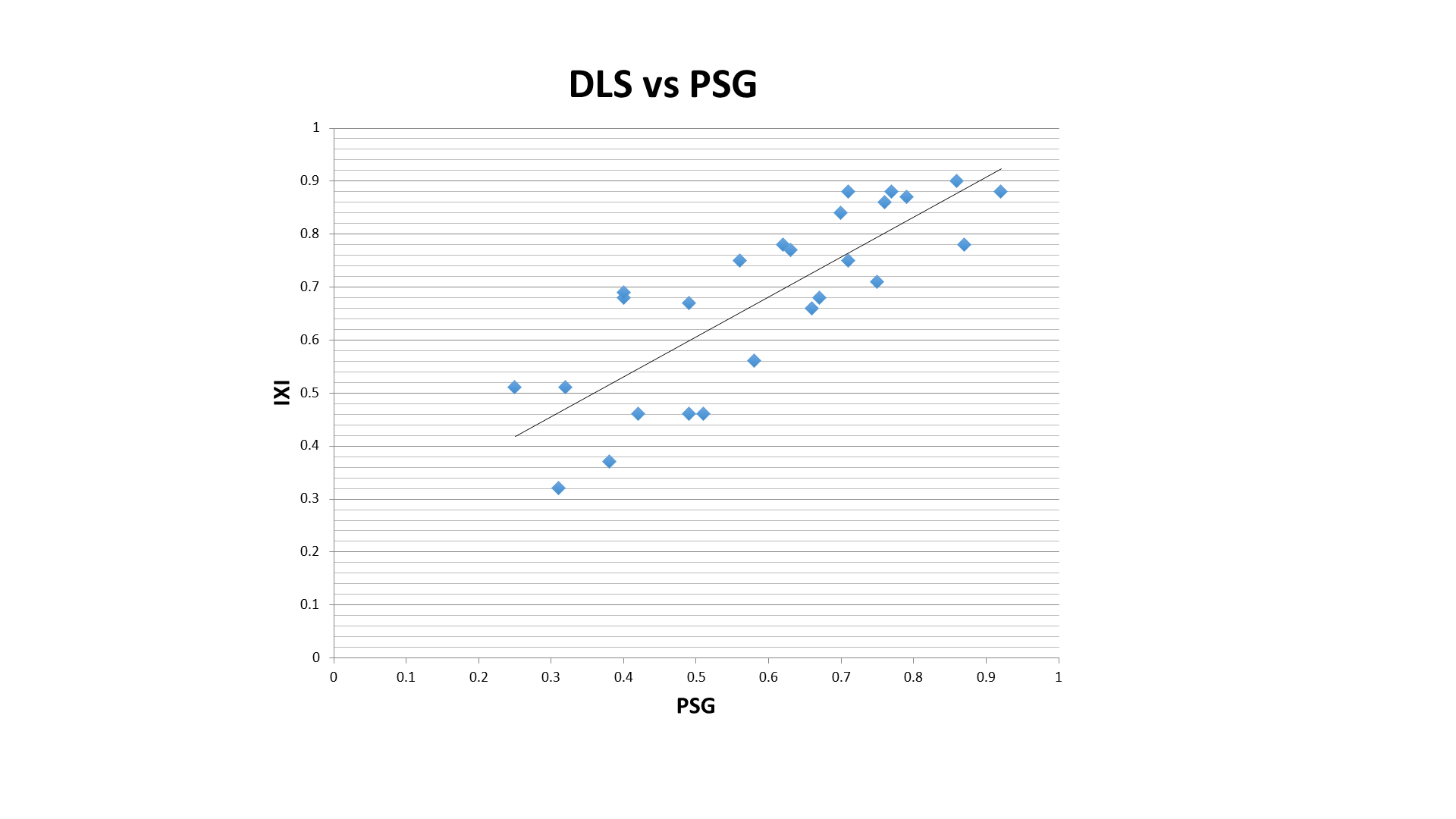Session Information
Date: Tuesday, June 6, 2017
Session Title: Technology
Session Time: 1:45pm-3:15pm
Location: Exhibit Hall C
Objective: To developed a novel sleep quantification method using raw actigraphy data from well characterized PD subjects and elderly controls with overnight PSG and home monitoring data.
Background: Sleep disturbance is a common non-motor symptom of PD with negative impact on patients’ health and quality of life. Wearable biosensors incorporating 3-axis accelerometers (actigraphy), have the potential to generate objective, passively collected digital biomarkers that advance drug development, research and clinical care. Use of actigraphy to measure sleep in PD has, to date, been limited by poor correlation between actigraphy metrics and gold-standard polysomnography (PSG), and by operational challenges in achieving compliance with Good Clinical Practice (GCP).
Methods: Consenting subjects with PD and elderly controls wore a raw actigraphy device overnight during simultaneous sleep lab PSG assessment, and at home 24/7 for 14 days when daily sleep diaries were completed. The correlations between PSG-derived sleep efficiency (% of time in bed spent asleep) and the standard ESS actigraphy algorithms1 were explored. “Deep learning” techniques (an artificial intelligence concept mimicking neural networks found in the human brain) were then applied to the synchronised raw actigraphy and PSG data to develop a new algorithm “DLS” for interpretation of sleep metrics in elderly and PD subjects. This DLS algorithm was then applied to data that had not been used in the deep learning process to quantify agreement between actigraphy- and PSG-derived sleep efficiency.
Results: Data from 26 subjects (22 controls, 4 PD) are presented. Deep learning algorithm DLS results were better correlated with PSG than standard ESS algorithms (r=0.81 r=0.52) and reduced average error by ~50%. Training the developed convolutional neural network (CNN) to characterize daytime activity (including motor symptoms such as tremor) improved the correct characterisation of night-time sleep/wake status.
Conclusions: Actigraphy offers potential for the passive, objective measurement of sleep, with acceptable correlation with gold standard PSG when clinical and physiological status is taken into account, and can be incorporated into a GCP compliant data management framework for clinical trial use.
References: 1 Borazio et al 2014, IEEE Int Cnf on Health Inf
To cite this abstract in AMA style:
J. Munro, R. Wolz, D. Hill, Y. DAUVILLIERS. Validation of actigraphy-derived sleep metrics in Parkinson’s disease (PD) patients and elderly controls, taking into account clinical and physiological status [abstract]. Mov Disord. 2017; 32 (suppl 2). https://www.mdsabstracts.org/abstract/validation-of-actigraphy-derived-sleep-metrics-in-parkinsons-disease-pd-patients-and-elderly-controls-taking-into-account-clinical-and-physiological-status/. Accessed December 24, 2025.« Back to 2017 International Congress
MDS Abstracts - https://www.mdsabstracts.org/abstract/validation-of-actigraphy-derived-sleep-metrics-in-parkinsons-disease-pd-patients-and-elderly-controls-taking-into-account-clinical-and-physiological-status/


